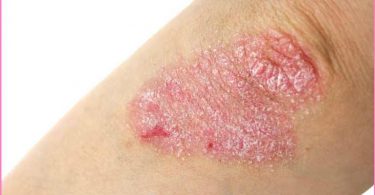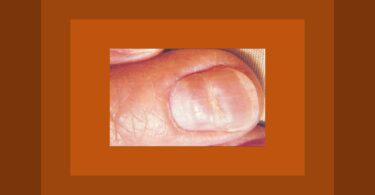The following guidelines on good clinical practices are extracted from the writings of Dr. Samuel Hahnemann regarding the physician’s protection against infection in epidemic diseases.
More than two hundred years ago Hahnemann wrote:
For every kind of poisonous exhalation there is in all probability a particular antidote, only we do not always know enough about the latter. It is well known that the air of our atmosphere contains two thirds of a gas that is immediately fatal to man, and extinguishes flame. Mixed up along with it is its peculiar corrective; it contains about one third of vital air, whereby its poisonous properties are destroyed; and in that state only does it constitute atmospheric air, wherein all creatures can live, grow and develop themselves. To chemistry we are indebted for all protective means against poisonous vapours, after we had discovered, by means of chemistry, the exact nature of these exhalations.
But it is quite another thing with the contagious exhalations from dangerous fevers and infectious diseases. They are so subtle that chemistry has never yet been able to subject them to analysis, and consequently has failed to furnish an antidote for them. Most of them are not catching at the distance of a few paces in the open air, but in close chambers these vapours exist in a concentrated form and then become injurious, dangerous, fatal, at a considerable distance from the patient. Now as we know of no specific antidotes for the several kinds of contagious matters, we must content ourselves with general prophylactic means. Some of these means are sometimes in the power of the patient, but most of them are solely available by the nurse and the physician, who visit the sick. As regards the former of these, the patient, if not too weak, may change bed every day, and the room be well aired by opening the doors and all the windows, and let the fresh air circulate once more through the room, before the physician comes to visit.
The first condition for those who visit such sick-beds for the first time, is that they should in the beginning rather see their patients more frequently, but each time stay beside them as short a time as possible, keep as far away as possible from the bed or chamber, and especially that they should take care that the sick room be thoroughly aired before their visit.
After these preliminary steps have been taken with proper caution and due care, we may then, by degrees, remain somewhat longer. Especially beside patients with the slighter form of the disease, and of cleanly habits, we may also approach them sufficiently close to be able to feel their pulse and see their tongue, taking the precaution when so near them, to refrain from breathing. All this can be done without any appearance of affectation, anxiety, or constraint.
I have observed, that it is usually the most compassionate, young physicians, who, in epidemics of this sort, are soonest carried off, when they neglect this precaution, perhaps from excessive philanthropy and anxiety about their patients. There is a wise middle path (which young physicians who visit the sick are counselled to adopt), whereby they may unite the most sensitive and warmest philanthropy with immunity to their own precious health. We must not neglect to impress the same precautionary measures on the attendants of the sick person.
The second precaution is that we should, when visiting the patient, endeavour to maintain our mind and body in a good equilibrium. This is as much as to say, that during this occupation we must not permit ourselves to be acted on by debilitating emotions; excesses in anger, grief and care, as also over-exertion of the mind of all sorts, are great promoters of infection.
We should endeavour moreover to preserve as much as possible our usual mode of living, and whilst our strength is still good we should not forget to take food and drink in the usual manner, and duly apportioned to the amount of hunger and thirst we may have. Unusual abstinence or excess in eating and drinking should be carefully avoided. But in this respect no absolute dietetic rules can be laid down. It has been said that one should not visit patients when one’s stomach is empty, but this is equally erroneous as if it were to be said, one should visit them with an empty stomach. One who like myself is never used to eat anything in the forenoon, would derange his digestion and render himself more susceptible of infection were he, following the old maxim, to eat something for which he had no appetite and visit his patients in this state; and vice versa.
On such occasions we should attend more than ordinarily to our desires for particular articles of diet, and procure if possible that for which we have most appetite, but then only eat as much as will satisfy us.
All over fatigue of the body, chills and night-watching should be avoided.
Every physician and nurse who has previously been engaged in practice will of course have learned to get over the unnecessary disgust they may feel. Thus we become gradually habituated to the occupation of tending patients suffering from malignant fevers, which is fraught with so much danger and cannot be compensated by any amount of pecuniary remuneration. If under all these circumstances we retain our courage, sympathizing compassionate feelings, and a clear head, we become persons of great importance by rising superior to ourselves; we dedicate ourselves to the welfare of the very poorest as well as the richest among the people, we become as it were angels of God on earth.
Should the medical man experience in himself some commencing signs of the disease, he should immediately leave off visiting the patient, and if he has not committed any dietetic error, I would recommend to avoid anything like medicinal prescriptions, the employment of a domestic remedy, so to speak, empirically.
In such cases I have taken a dose of cinchona bark every three quarters of an hour, until all danger of infection (whatever kind of epidemic fever the disease might be) was completely over. I can recommend this from my own experience, but am far from insisting upon the performance of this innocuous and powerful precaution by those who are of a different opinion. My reasons would be satisfactory if I could adduce them in this place. But as it is not enough to protect ourselves from infection, but also necessary not to allow others to come in the way of danger through us, those who have been engaged about such patients should certainly not approach others too nearly until they have changed the clothes they had on when beside the patients for others, and the former should be hung up in an airy place where no one should go near them, until we again need them to visit our patients. Next to the sick-room, infection takes place most easily by means of such clothes, although the person who visits the patient may not have undergone any infection.
A highly respectable and orderly individual, an old good-natured person, had a female attendant, who without his knowledge, employed all her leisure hours in making herself useful to a poor family living about a hundred yards from his house, who were lying sick of a putrid fever, the prominent character of which was a malignant typhoid fever. For a fortnight all went on well; but about this time the gentleman got exactly the same kind of fever, only much more malignant. I visited him as a friend with unreserved sympathy as I ought, and I fell sick of the same fever, although I had been already very much accustomed to infection. This case, together with many other similar ones, taught me that clothes carry far and wide the contagious matter of such fevers, and that depressing mental emotions render persons susceptible to the miasm, even such as are already used to its influence. But the safest plan is to employ even in this case a little blameless precaution!
Reference: The Lesser Writings of Samuel Hahnemann





Hahnemann gave many such original ideas regarding hygiene and preventive measures in his articles ‘‘The Friend of Health I & II’ (98 pages) which was incorporated by RE Dudgeon in the book ‘Lesser Writings of Hahnemann’. Every physician must and should read this.
Thanks to Dr. Iman Navab for excellent and timely compilation. Thanks to Hpathy for timely publishing this article when the Swineflu is prevalent in India. It is very useful to the Homeopaths, para-medical staff and attendants.
Another excellent advise worth mentioning from Hahnemann is –“’The physician, accompanied by the surgeon, both covered with oil cloth, cloak (Apron), visits the patients twice a day, and questions them at a distance of three paces (equal to three natural steps, about 90 inches long). If he require to feel their pulse, he must for this with averted head, and immediately afterwards wash his hand in a basin containing water and vinegar. If the patient’s face be directed towards the light, it is not difficult to observe the state of the tongue at a distance of three paces. At a less distance it is scarcely possible to avoid the danger of inhaling the patient’s breadth, whence the contagious principle spreads farthest and most powerfully.” (page 207)
In the present day, better to wear Face mask (N95) while we are in clinic.
Thank you.